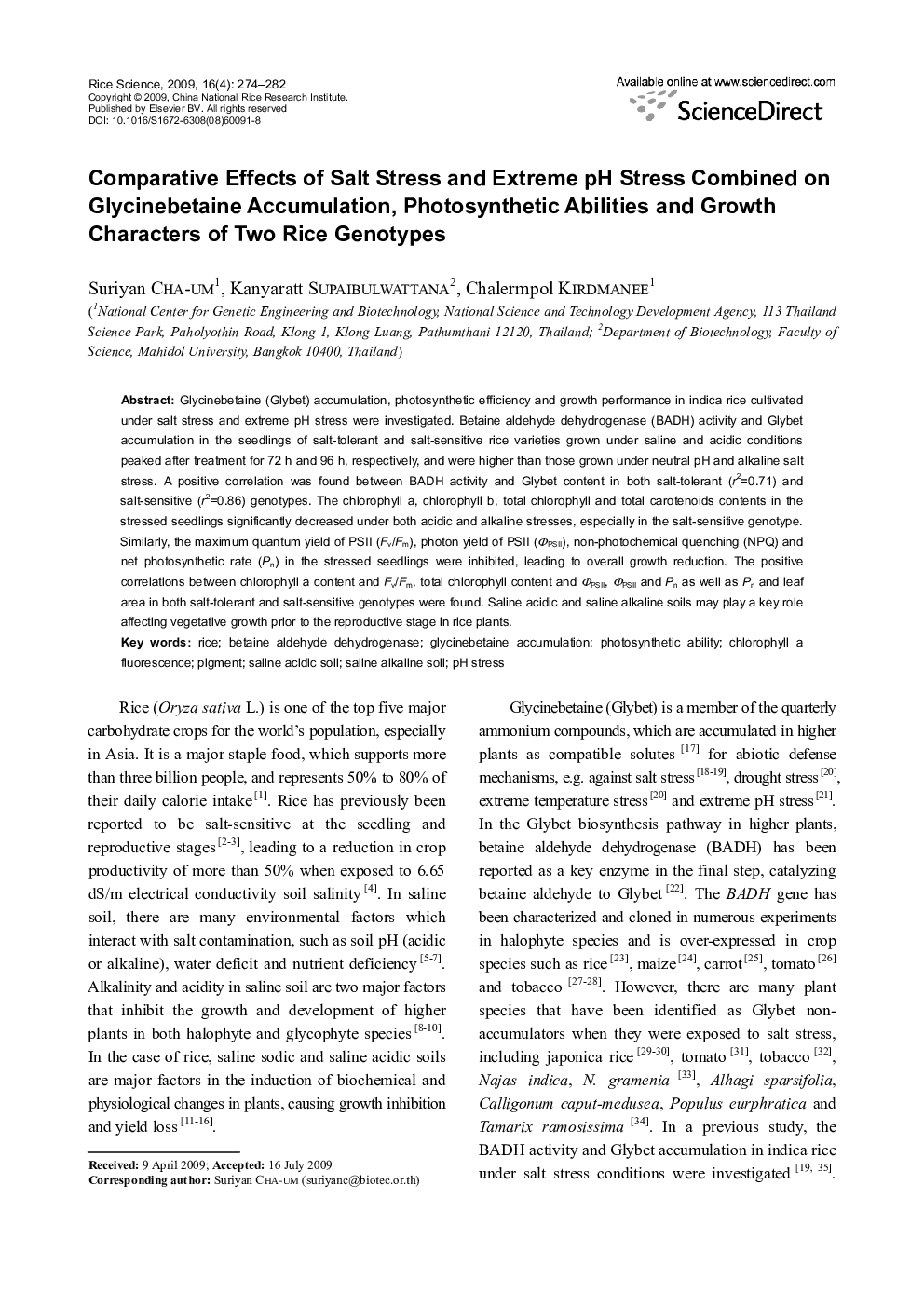| Article ID | Journal | Published Year | Pages | File Type |
|---|---|---|---|---|
| 4501894 | Rice Science | 2009 | 9 Pages |
Glycinebetaine (Glybet) accumulation, photosynthetic efficiency and growth performance in indica rice cultivated under salt stress and extreme pH stress were investigated. Betaine aldehyde dehydrogenase (BADH) activity and Glybet accumulation in the seedlings of salt-tolerant and salt-sensitive rice varieties grown under saline and acidic conditions peaked after treatment for 72 h and 96 h, respectively, and were higher than those grown under neutral pH and alkaline salt stress. A positive correlation was found between BADH activity and Glybet content in both salt-tolerant (r2 = 0.71) and salt-sensitive (r2 = 0.86) genotypes. The chlorophyll a, chlorophyll b, total chlorophyll and total carotenoids contents in the stressed seedlings significantly decreased under both acidic and alkaline stresses, especially in the salt-sensitive genotype. Similarly, the maximum quantum yield of PSII (Fv/Fm), photon yield of PSII (ΦPSII), non-photochemical quenching (NPQ) and net photosynthetic rate (Pn) in the stressed seedlings were inhibited, leading to overall growth reduction. The positive correlations between chlorophyll a content and Fv/Fm, total chlorophyll content and ΦPSII, ΦPSII and Pn as well as Pn and leaf area in both salt-tolerant and salt-sensitive genotypes were found. Saline acidic and saline alkaline soils may play a key role affecting vegetative growth prior to the reproductive stage in rice plants.
